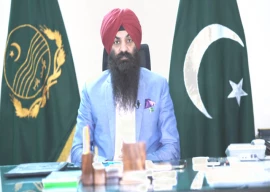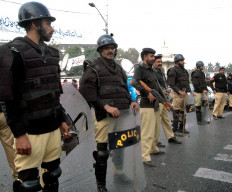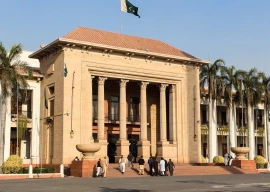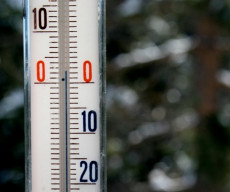
Pakistan spends seven times more on its military than on primary education and has the second highest number of out of school children in the world, according to the Education for All Global Monitoring Report 2012, which was launched here on Wednesday.
But despite having some of the worst education indicators in the world, Pakistan is making slow progress in educating its population, including girls, according to Unesco’s director in Pakistan, Dr Kozue Kay Nagata.
According to the report, Pakistan has allocated only 2.3 per cent of the budget for education, which is 0.3 per cent less than in 1999. Nine per cent of government spending is on education, placing Pakistan 113th amongst 120 countries on the Education Development Index. All this for a country which has a total of 5.1 million out of school children, the second highest in the world; 1 in 12 of the out of school children in the world are in Pakistan.
Speaking to The Express Tribune, Dr Nagata suggested initiatives that government could take to improve the situation. She said Pakistan needed to develop a strong legal framework to ensure the provision of education under Article 25-A of the Constitution, which mandates free and compulsory education for all aged 5-16. She said that work on this was underway in the Punjab and the provinces should take the lead since education had become a provincial responsibility under the 18th Amendment.
Two-thirds of the out of school children in the country, over three million of them, are girls, says the report. Of the 49.5 million illiterate adults in Pakistan, again, two-thirds are women, the third highest rate in the world.
Dr Nagata said raising public awareness of the benefits of education for girls was key. “There is a negative attitude among people about education, especially for girls,” she said. In Punjab, Balochistan and Khyber-Pakhtunkhwa, the poorest girls are the most disadvantaged in terms of education, with more than half never having gone to school, states the report.
One in three girls in Swat, the home district of Malala Yousafzai, do go to school, says the report. Many at the launch acknowledged Yousafzai’s campaign for girls’ right to education. The Unesco director general made a statement at the global launch of the report on October 16 paying tribute to Yousafzai’s efforts.
The report states that female literacy currently stands at 61 per cent in the 15-24 age group but is projected to rise to 72 per cent in 2015. Adult female literacy, currently at 42 per cent, is expected to rise to 47 per cent. Dr Nagata said this showed that girls today were more educated than their mothers, which was a promising trend. Youth male literacy currently stands at 79 per cent.
Dr Nagata said that there was a need for more evidence creation, in the form of reports and analytical work, to help the government formulate better policies. “Evidence creation is necessary for planners to formulate relevant strategies to address challenges,” she said.
She said public-private partnerships could help create sustainable projects. Such projects could be initiated by replicating pilot projects done by international agencies like Unesco.
Provincial launch
Adviser to the Chief Minister Zakia Shahnawaz, addressing the launch ceremony for the report here on Wednesday, said Pakistan could not afford to deprive its citizens of education.
Nadeem Alam, the additional secretary of the Literacy and Non Formal Basic Education Department, said that Rs2.3 billion had been approved for educating illiterate adults and children in the province. He said that the department was the only one of its kind in the country and it had taught almost 800,000 adults and children to read and write since it was set up in 2002.
Schools Education Deputy Secretary Qaiser Rasheed said that Punjab was spending 28 per cent of the provincial development budget on education. He differed with the figures for out-of-school children in the report, saying that there were 9.54 million such children aged 5-16 in the Punjab alone, of which 4.4 million were aged 5-9.
“Pakistan needs to think out of the box,” said Baela Raza Jamil, director of programmes at Idara-i-Taleem-o-Aagahi and an adviser to the Global Monitoring Report. She said that there was a need to connect formal and non formal education with decent livelihoods. Poverty deprived people of learning as well as livelihood opportunities, she said.
Published in The Express Tribune, October 25th, 2012.
COMMENTS (1)
Comments are moderated and generally will be posted if they are on-topic and not abusive.
For more information, please see our Comments FAQ


1737582559-0/Elon-Musk--(2)1737582559-0-165x106.webp)
1737579953-0/Trump-(10)1737579953-0-165x106.webp)







1736070587-0/Express-Tribune-(2)1736070587-0-270x192.webp)
1737452260-0/Gaddafi-stadium-(2)1737452260-0-270x192.webp)
1737531830-0/Saim-Ayub-injury-(2)1737531830-0-270x192.webp)









The only way to evade the current economic and socio-political crisis is to improve the current education infra-structure of the country. In today's world, the forte for an established and developed country is it's education system. More educated the citizens, higher the probability of rational thinking. In simple terms, it means the country's economic development depends upon her skilled labor.